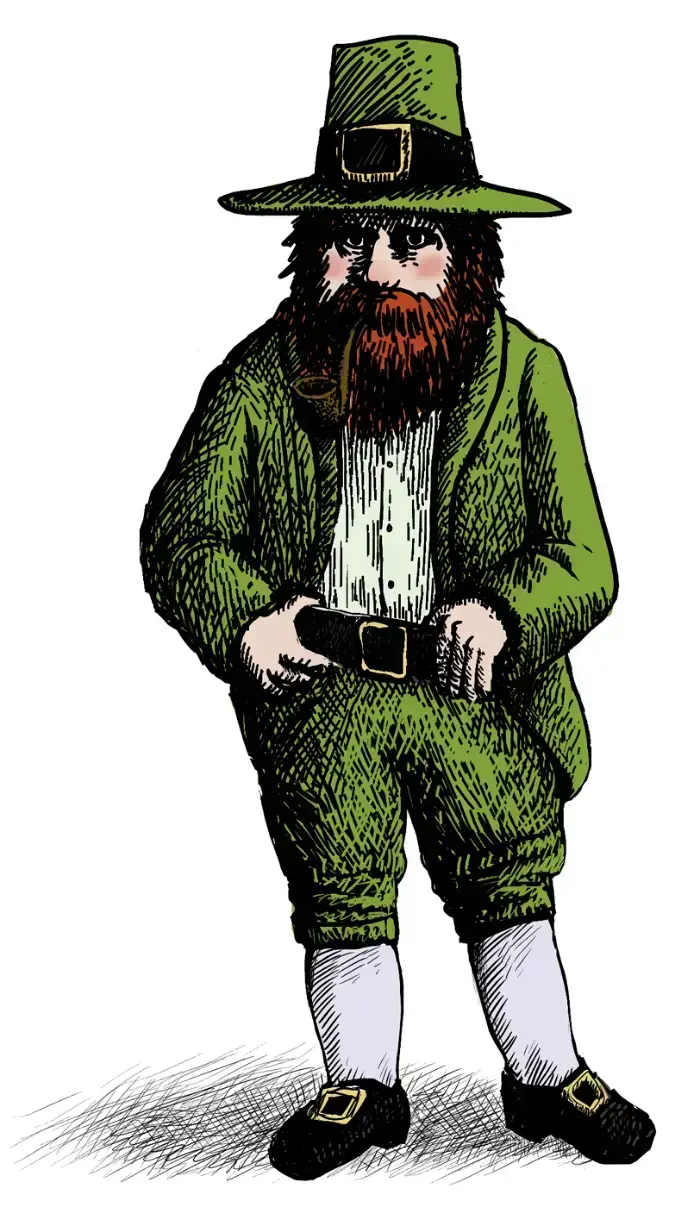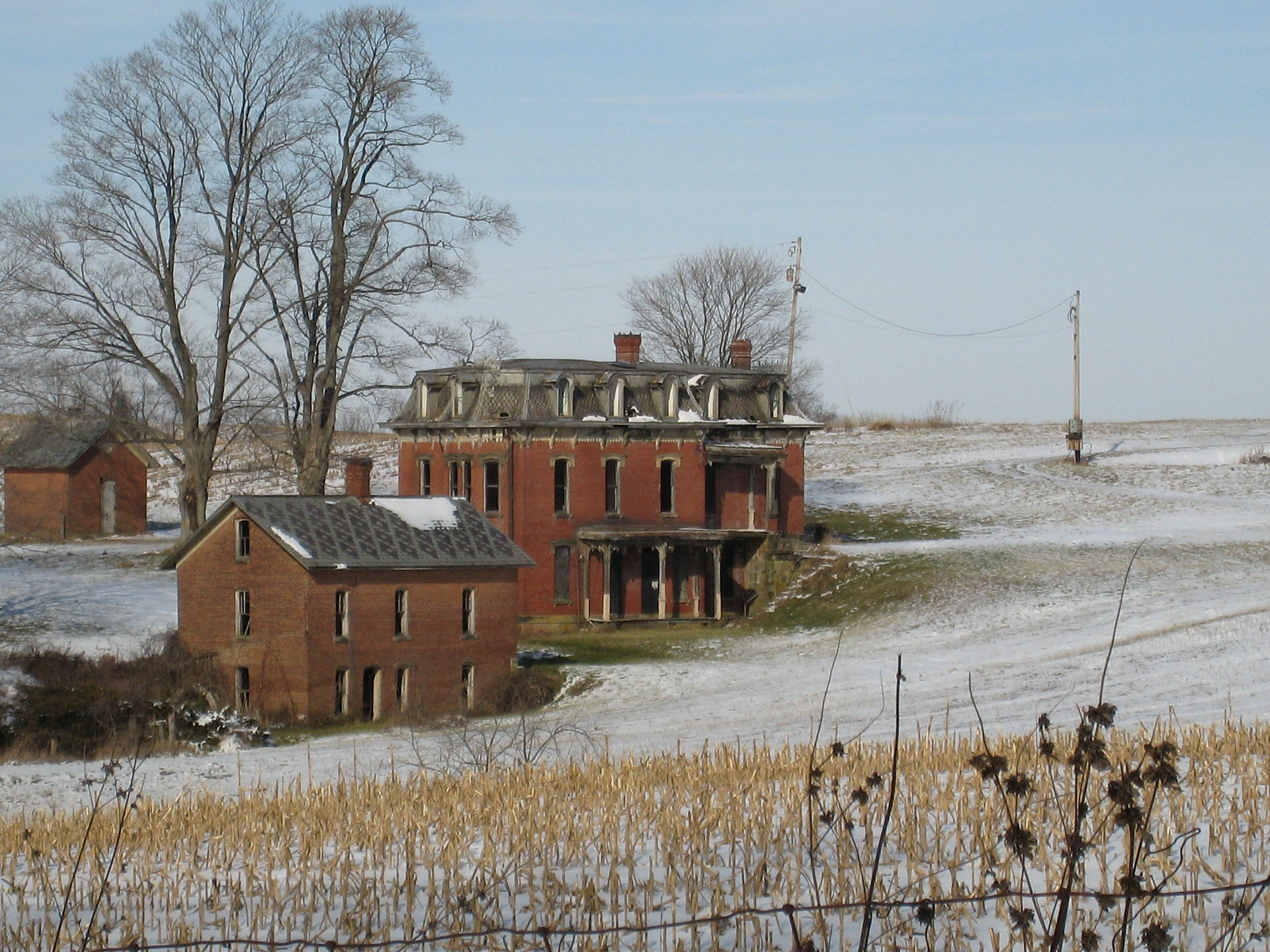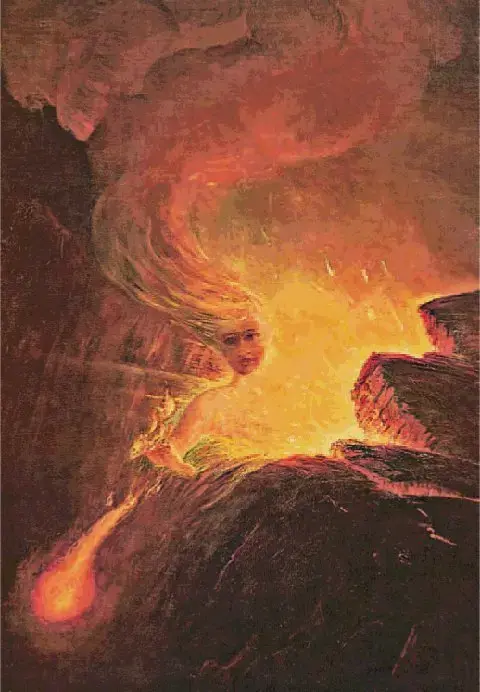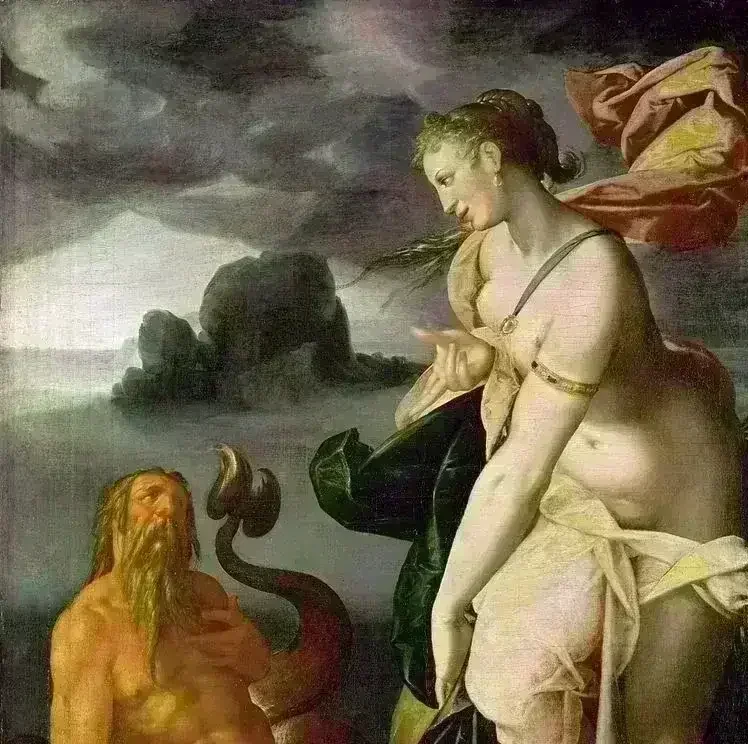Leprechaun

A leprechaun (Irish: lucharachán/leipreachán/luchorpán) is a diminutive supernatural being in Irish folklore, classed by some as a type of solitary fairy. They are usually depicted as little bearded men, wearing a coat and hat, who partake in mischief. In later times, they have been depicted as shoe-makers who have a hidden pot of gold at the end of the rainbow.
Leprechaun-like creatures rarely appear in Irish mythology and only became prominent in later folklore.
The Anglo-Irish (Hiberno-English) word leprechaun is descended from Old Irish luchorpán or lupracán, via various (Middle Irish) forms such as luchrapán, lupraccán, (or var. luchrupán).
The earliest known reference to the leprechaun appears in the medieval tale known as the Echtra Fergus mac Léti ('Adventure of Fergus son of Léti'). The saga exists in two widely divergent versions. The first of these is written in Dublin, Trinity College MS 1337 pp. 363b–365a, better known as H. 3. 18 (CIH iii: 882.4–883.28) and has been dated to the eighth century (Binchy 1952). The second version is a copy of the 8th century text written on a single leaf inserted into London, British Library MS Harley 432 f.5 (CIH ii: 354.28–355.41). The saga was rewritten in the 13th century as a burlesque version. The text contains an episode in which Fergus mac Léti, King of Ulster, falls asleep on the beach and wakes to find himself being dragged into the sea by three lúchorpáin. He captures his abductors, who grant him three wishes in exchange for release.


